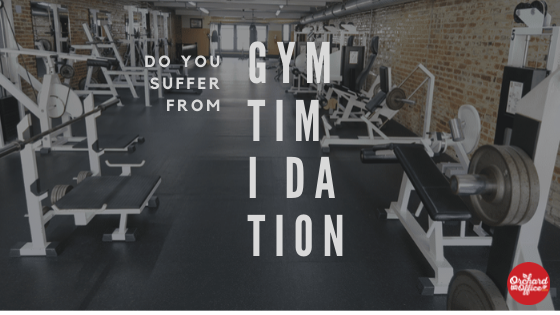Modern life offers us so many serious issues to worry about and few of these complex problems have easy solutions. Coronavirus, the stock market, travel plans, tax season, health scares and aging parents top the list of worries for many. In addition, the constant flow of information coming through our screens often means there is no escape from worrying subject matter. How can you protect your mental well-being from the constant onslaught of frightening scenarios? Additionally, how can you panic-proof your organization and promote calmness?
Techniques to Champion Calmness in Your Organization
The many challenges and unknowns in life will continue to confront us. If we can cultivate calm minds in our companies, we will be better able to respond with clarity and recover from adverse events more quickly. Just as panic can spread through a room, an organization or a country, calmness can be contagious if it is promoted.
Nurturing Serenity
Calmness is the mental state of being free from agitation, excitement, or disturbance. Life’s challenges prevent this from persisting as a constant mental state, but calmness is a practice that can be learned and employed during demanding times.
Close your eyes and picture a calm person you know. What is it about this person that tells you they are calm? A calm person may speak in an even, unperturbed tone of voice. Their shoulders are relaxed, and their faces are neutral and serene. A calm person may pause for a moment before replying to a question or comment. They are often considered “the voice of reason” in chaotic situations.
There are many benefits to cultivating a calm state of mind in your organization. When the mind is calm, people can think more clearly and are less likely to make mistakes. Employees have a greater capacity to be empathetic and tolerant of others, allowing them to see the big picture in conflicts. When people are calm, blood pressure, heart rate, and breathing are in the normal zone, reducing the risk of health complications. The mind is also more capable of creative problem solving as crisis mode thinking pushes people to make situations black or white issues when reality contains countless shades of gray.
Calm the Mind with Meditation
Meditation is a set of techniques that are intended to encourage a heightened state of awareness and focused attention. For some, the idea of meditating can be overwhelming and intimidating. There are many different types of meditation so try several until you find the style that works best for you. Encourage employees to meditate at their desks for several minutes each day to reap the benefits of quieting their minds.
The Effects and Benefits of Meditation
Research has shown that meditation can have both physiological and psychological effects. Some of the positive physiological effects include a lowered state of physical arousal, decreased respiration rate, decreased heart rate, changes in brain wave patterns and lowered stress.
Some of the other psychological, emotional, and health-related benefits of meditation include:
- Improved stress management
- Improved mental and emotional well-being
- Better symptom management for issues including anxiety disorders, depression, sleep disorders, chronic pain and high blood pressure
- Improvement in working memory and executive function
- Improvements in verbal fluency and visual-spatial processing
- Improvement in mood
Create a Tranquil Workspace
Your five senses supply your brain with a tremendous number of stimuli every second of the day. Take a moment now to survey your sensory surroundings. What do you see, hear, smell, taste and feel in your current space? How frequently are you receiving alerts from your email or phone? Is your desk a mess? Are noisy coworkers a constant source of irritation for you? Are you sitting in an uncomfortable chair at a desk that is too low for your laptop? Is your office freezing cold?
The path to calm in the office begins with your workspace. Take a few minutes to organize your area, adjust the height of your chair and change the settings on your digital distractions. Perhaps it is time to invest in noise-canceling headphones. Adorn your desk with a couple of items that bring you pleasure to see. Leave a warm jacket or lap throw in your office for days when the ambient temperature is uncomfortably cool. There is a multitude of quick, inexpensive ways to make the place where you spend at least 8 hours a day more comfortable, inviting and calming. Give yourself and your employees permission to create personal spaces to enjoy.
Reset with a Deep Sigh
Research shows that sighing functions as a physiological resetter. When you find yourself feeling anxious, frustrated, or agitated, tap into your body’s own stress-relief mechanisms–sighing. Focus on your breath. Inhale deeply and exhale fully. This allows you to refocus both your body and your mind. Encourage staffers to reframe sighing as a positive action that relieves stress instead of as a sign of frustration or impatience.
Get Some Fresh Air
Uncomfortable temperatures and poor air circulation in a room can increase feelings of anxiety or frustration. If you’re feeling tense and the office is hot and stuffy or too cold, go outside for a few minutes. Fresh air and a change of scenery can interrupt anxious thoughts and help you become calmer. Consider holding meetings outdoors when the weather is especially nice.
Start a Gratitude Journal
Focusing on gratitude helps counterbalance negative or fearful thoughts. Encourage employees to take a few minutes several times a week to write down reasons to feel thankful or appreciative. Being as specific as possible, focus on the people to whom you are grateful instead of on a generic list of things. Be grateful for any negative outcomes you avoided, escaped, prevented, or turned into something positive. Create a Gratitude Board or Good News Board in the breakroom where employees can share their thankfulness for colleagues.
Diffuse Lavender Oil
Lavender increases relaxation, encourages sleep and helps relieve anxiety. Lavender interacts with the neurotransmitter GABA to help quiet the brain and nervous system activity, reducing agitation, anger, aggression, and restlessness. If permitted, diffuse lavender at your desk to reduce stress. Other ways to benefit from lavender include applying the diluted oil to pulse points or adding a couple of drops to cupped hands and inhaling the scent.
Listen to Music or Soothing Sounds
Listening to music can be a powerful tool in relaxing our minds and bodies. Classical music has shown to have beneficial effects on heart rate and blood pressure, and it can decrease the levels of stress hormones. Nature sounds such as babbling brooks, ocean waves, rolling thunder or ambient forest sounds are also potent stress reducers that can help you calm your mind. Consider creating a playlist of music or sounds you find relaxing. Encourage employees to listen to music through earbuds at their desks.
Social Media Boundaries
Social media can be a great way to stay connected with friends, colleagues and family. It can also be a source of negativity and misinformation. Consider deleting social media apps from your phone and limiting scrolling to 15 minutes in the evening. If you are not ready to step away, consider unfollowing pages or people who consistently post content that disturbs your peace. We can love people and not enjoy them on social media at the same time.
Limit News Consumption
It is vital to stay informed but that does not mean you have to listen to or read the news several times a day. Download a podcast about your hobby or favorite show to enjoy during your commute. Catch up on some reading with audiobooks. Unfollow blogs that feature sensational content or employ fearmongering tactics. Choose a couple of reliable sources for news and limit visits to once a day. Avoid leaving the television in the breakroom on a news channel.
Breathing Techniques
Breathing exercises are an excellent tool for defusing tension, relieving stress and regaining focus. They require no extra space or specialized equipment and can bring about a dramatic change in a few minutes.
Box Breathing
Box breathing is a breath exercise you can practice anywhere when you are in need of calming.
1. Breathe in slowly and deeply for a count of four.
2. Hold that breath for a count of four.
3. Exhale slowly through pursed lips for a count of four.
4. Rest with empty lungs for a count of four.
5. Take two normal breaths.
6. Repeat box breaths.
There are several free apps people can utilize for practicing box breathing. As you become more comfortable with box breathing, you can increase the amount of time you perform each step, working your way up to 8 seconds. Lead several rounds of box breathing at the beginning of a meeting to promote calmness.
Breath Meditation Step-by-Step
- Sit comfortably in a chair with your back straight and shoulders relaxed.
- Close your eyes and take a few deep breaths. Feel your body where it comes into contact with the chair. Notice the physical sensations associated with sitting in the chair-feelings of pressure, warmth, etc.
- Gradually turn your attention to the process of breathing. Notice wherever you feel the breath most clearly, whether in your nose or in the rising and falling your chest or abdomen.
- Allow your attention to remain focused on the sensations of your breathing. (There is no need to control your breath. Just let it come and go naturally.)
- Every time your mind wanders, gently return it to the sensation of breathing.
- As you focus on your breath, you will notice that thoughts and sensations continue to appear. Simply notice these as they emerge, and then return to the sensation of breathing.
- Repeat this process during the time you set aside to meditate.
A Better Way Forward
Promoting behaviors that relieve stress and encourage calm minds is an inexpensive, effective way to improve the well-being of your staff. Facing unpleasant, frustrating or even terrifying events with calmness does not make them disappear. However, choosing a calm response gives us the opportunity to assess the situation, formulate a thoughtful plan and care for those around us in a way that unites instead of divides.










 and blood sugar
and blood sugar